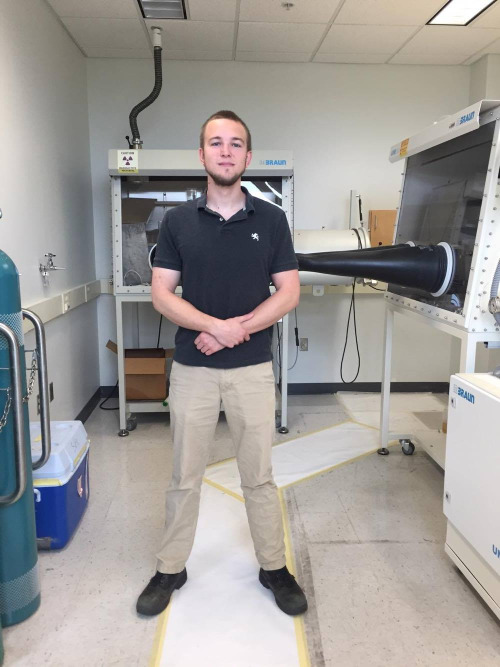Mark Silver
U.S. Department of Energy Carlsbad Field Office Fellowship
Chemistry and Biochemistry
Research involving nuclear materials has been something I’ve been inconspicuously committed to throughout my entire life. Perhaps this dormant drive was passed down from my grandfather, whose work in the Pacific atolls provided data for military scientists before the Cold War. In the time since the end of this international dispute, scientists, like Thomas Albrecht-Schmitt, have been able approach these heavy elements with a bit of freedom to explore the chemistries and fundamental properties of these elements, aside from their use on the battle lines. This opportunity has been very attractive, as it has allowed me to apply my understanding of coordination chemistry and inorganic chemistry to actinide science. Disciplined focus in this topic has been beneficial to radiological scientists, such as those working on solving nuclear repository issues and others furthering our understanding of heavy and super heavy elements. The Department of Energy external fellowship that I have been awarded is evidence of their recognition of my research.
My intended career path is aimed at obtaining a postdoctoral position, followed by conversion to staff scientist, at Los Alamos National Laboratories. This facility is terra firma for heavy element researchers, and has a rich history of scientific achievement in the realm of nuclear chemistry. Known as being a laboratory fully dedicated to actinide research, the added scrutiny of radiological safety officers would be a small obstacle if the cutting-edge research that I have planned comes to existence. It is my hope that I am able to appropriately work with LANL staff to puncture the ceiling of our current understanding of actinide chemistry and to refine the models we use to describe these elements at the bounds of stability in the periodic table.
The fellowship that I have been awarded has allowed me to pursue research at several institutions, including the National Accelerator Laboratory at Stanford and the Institut für Nukleare Entsorgung in Karlsruhe, Germany. These endeavors have provided much depth to my graduate research, where at the former facility synchrotron experience and data were acquired on samples related to my fellowship’s goals. At the latter institution, research in line with the goals of an international nuclear repository community was gathered with the intent of finally placing a confirmatory pin in an issue that has been disputed for several decades. With only a few months left in my graduate career, these results are monumental to both me and my collaborators, but will require intense efforts to get into writing before my defense in the late-Fall.


